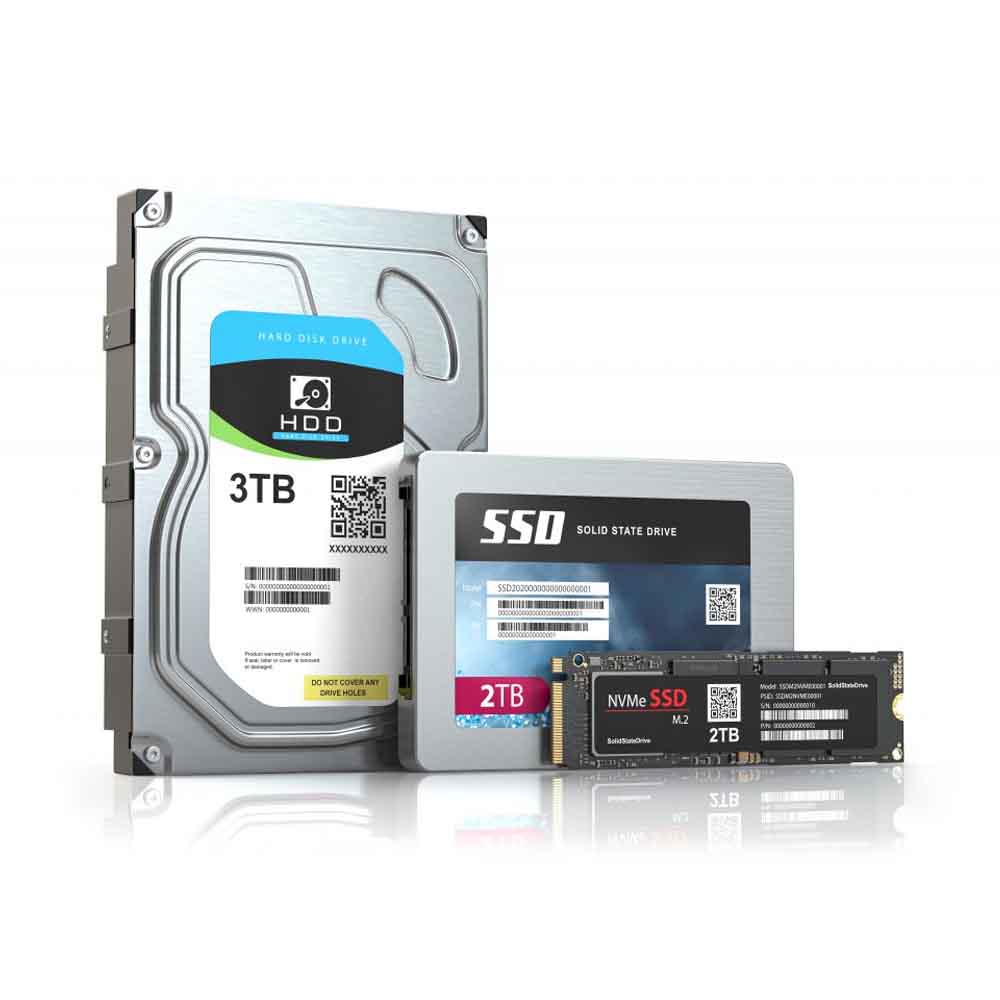There are several different types of solid-state drives (SSDs) available, each with its own set of benefits and drawbacks. When choosing an SSD, it’s important to consider factors such as your budget, performance requirements, and the type of system you will be using the SSD in. Here are some of the main types of SSDs and their characteristics:
- SATA SSD: SATA is the most common interface for 2.5-inch SSDs and is also used by some mSATA and M.2 SATA SSDs. SATA SSDs are budget-friendly and offer good performance for everyday tasks, but are slower than NVMe SSDs.
- NVMe SSD: NVMe is a newer and faster interface that is used by M.2 NVMe and U.2 SSDs. NVMe SSDs offer faster read and write speeds, low latency, and higher endurance than SATA SSDs, making them a good choice for demanding applications and systems.
- mSATA SSD: mSATA is a small form factor for SSDs that is typically used in ultrabooks, tablets, and embedded systems. mSATA SSDs offer good performance and a small form factor, but are slower than NVMe SSDs.
- U.2 SSD: U.2 is a form factor for SSDs that connect to the motherboard using a U.2 cable. U.2 SSDs are similar in size to 2.5-inch SSDs and offer higher performance than SATA and mSATA SSDs, but are less common.
Ultimately, the best type of SSD for you will depend on your specific needs and preferences. If you’re looking for a budget-friendly option with good performance, a SATA SSD or mSATA SSD may be a good choice. If you’re looking for the fastest performance, an NVMe SSD is likely your best option. If you’re using a compact system, such as an ultrabook or tablet, an mSATA SSD may be the best choice for you.
